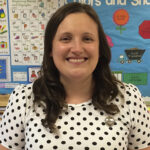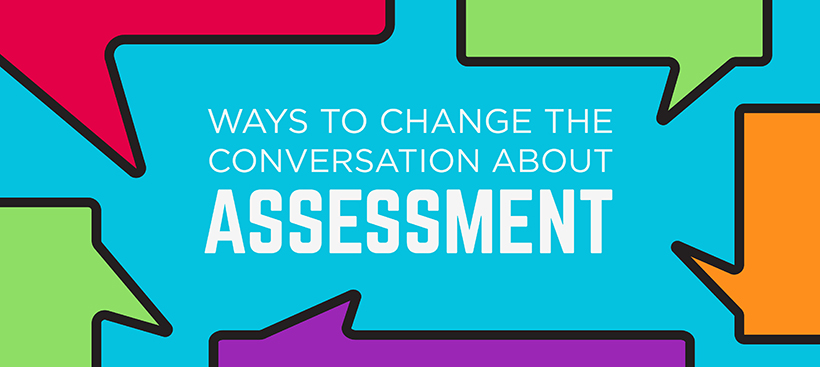From the NCTE Standing Committee on Literacy Assessment.
This invited post was written by NCTE members Kate Booher and Meredith Labadie.
As early childhood educators who teach through an antiracist, antibias lens, we have found that redefining the purposes of assessment in our work has opened up endless possibilities in our literacy instruction for us to intersect curricular mandates with explorations of identity, equity, and justice. Building on the work of Bobbie Kabuto and the NCTE Standing Committee on Literacy Assessment’s continued call for a shift to an inquiry perspective of assessment, we consider how this type of assessment can support teachers in teaching through an antibias, antiracist framework (Derman-Sparks et al., 2020).
What Counts? Reexamining Assessment
Standardized, high-stakes, mandated assessments often overshadow the moments of wonder, curiosity, and connection that can serve as revealing formative “data.” Teachers in all grade levels can use this type of formative data to understand both the skills and inquiry paths of their students. If these formative moments are overlooked, children’s voices and identities are inadvertently silenced. Conversely, if these moments are intentionally cultivated and embraced, children are able to see the power of their voices and identities.
In our classrooms, we consider the following to get a bigger picture of student development:
- What are children telling me about their understanding of the world through their play, dialogue with their peers, artwork, class meetings, and book discussions?
- How might I use my ongoing observations and documentation of children’s work to inspire action for my students?
- What barriers, beliefs, or assumptions of my own might I need to interrogate in order to use informal assessment to support antiracist, antibias teaching?
- Where might there be cracks in the required curriculum to incorporate exploration of identity, diversity, justice, and action related to what I’ve observed in my classroom?
Observations from an Early Childhood Classroom
One afternoon in a kindergarten classroom, students can be seen busily engaged in centers all around the classroom as the teacher moves around the classroom observing their play. Four girls can be seen sitting at a table constructing an elaborate scene out of play dough. One child is making a unicorn, while the other children shape their play dough into trees, flowers, and rainbows. As the teacher inquires into what they are doing, one child offers up “we are making a girly land.”
The teacher then walks past the dramatic play center where two children can be seen playing with baby dolls. Jack, a biracial boy, enthusiastically grabs a baby doll with peach skin from the pile to play with along with a pretend bottle to feed his baby. Melanie, a white student who is playing with him, grabs a different baby doll with light brown skin and hands it to Jack. Melanie says, “You play with this one.” As Melanie grabs the baby doll with peach skin out of Jack’s hands, Jack protests “But I want this baby!” Melanie then explains her thinking to Jack: “This one has skin like yours. I’ll take that one because it has skin like mine.” Jack accepts the baby doll with light brown skin matching his own, but still frowns as he watches Melanie playing with the peach-skinned doll he had picked up originally.
As teachers observing these play scenarios through an antibias, antiracist lens, we see opportunities to document these students’ understanding of their own and other’s identities. In the first scenario, we notice the girls identifying things like rainbows, flowers, and unicorns as “girl” things that belong in a “girly land.” We notice they have not included any boys in their play or considered a more diverse representation of items girls can like. With support, these students might be able to disrupt traditional gender norms and interrogate if there should really be “boy things” and “girl things.”
In the second scenario, Melanie shows us that she has an awareness of skin color, both of her own and others. She also shows that she is still developing her knowledge of families and may not be aware that a baby could have a parent with a different skin color. Jack, who was very aware that parents could have different skin colors from their babies (as is the case in his family), may not yet be confident in expressing his knowledge to peers.
Leveraging Observations for Future Learning
As early childhood educators, we recognize the power of ongoing, authentic assessment as a means to support our learners and help them grow along their own developmental continuums. Informal observations such as these present opportunities not just for teachers to see how students’ identities are at play in the classroom, but also how to plan future lessons that can address topics of gender, race, diverse families, and self-advocacy.
To leverage these observations for further literacy instruction, and to continue to assess student learning, teachers might consider the following:
- What children’s books could be incorporated for literature discussion to provoke deeper exploration of these issues from multiple perspectives?
- What related topics can I bring up for further dialogue in class meetings to gain an even deeper understanding of my students’ wonderings?
- What writing provocations can I offer students for them to advocate for their own questions and opinions surrounding these issues?
- What opportunities can I create for them to share their writing, learning, and advocacy with their peers, families, school, and community members?
- What opportunities exist for us to extend explorations of these topics into drama, art, and music?
Noticing as students negotiate their own and other’s identities helps us build on and center their questions about the world while also providing opportunities to interrogate and shift possible misconceptions. Careful observation reveals small moments such as these across the school day, and can be a powerful impetus for documenting students’ understandings and planning instruction to move them forward
References
Derman-Sparks, L., Edwards, J. O., & Goins, C. M. (2020). Anti-bias education for young children and ourselves (2nd ed.). National Association for the Education of Young Children.

 Kate Booher is an early childhood educator and a PhD candidate at Saint Louis University. Her research focuses on early childhood educators who teach toward antiracism and critical content analysis of the children’s literature that teachers use for this purpose.
Kate Booher is an early childhood educator and a PhD candidate at Saint Louis University. Her research focuses on early childhood educators who teach toward antiracism and critical content analysis of the children’s literature that teachers use for this purpose.
Meredith Labadie is currently a scholar in residence at the University of Missouri–St. Louis, where she teaches literacy courses, conducts literacy research, and supports the UMSL Literacy Clinic. In addition to her university work, Labadie is currently a kindergarten teacher in St. Louis, and much of her research is conducted in her kindergarten classroom.
It is the policy of NCTE in all publications, including the Literacy & NCTE blog, to provide a forum for the open discussion of ideas concerning the content and the teaching of English and the language arts. Publicity accorded to any particular point of view does not imply endorsement by the Executive Committee, the Board of Directors, the staff, or the membership at large, except in announcements of policy, where such endorsement is clearly specified.

